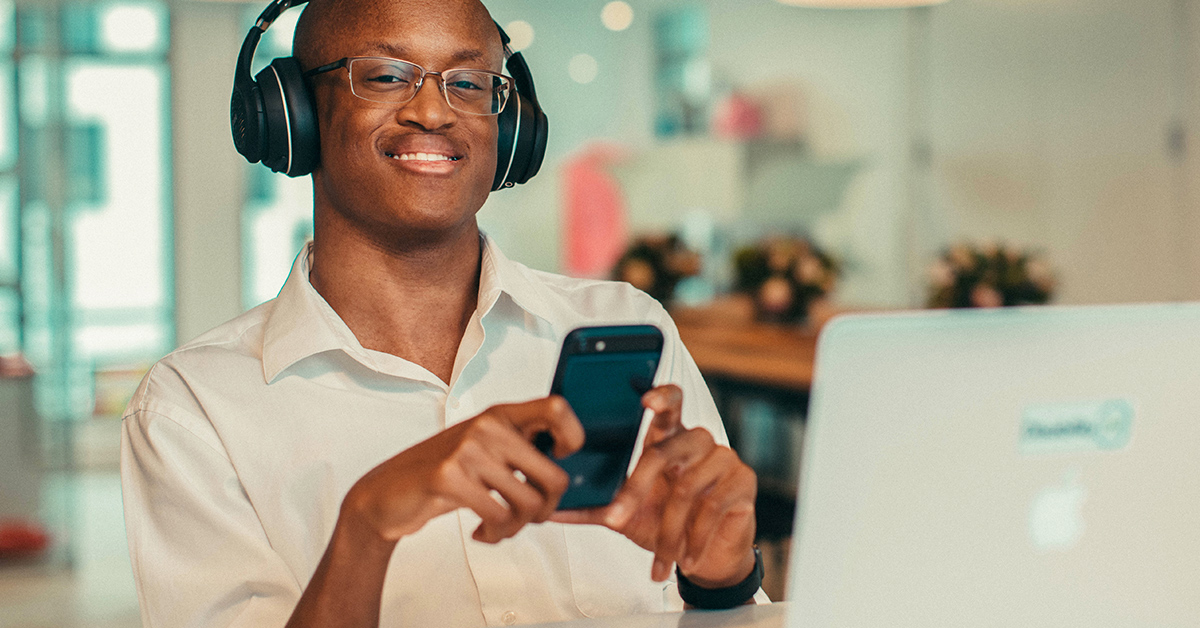What is disability inclusion?
Have you ever looked at a diversity initiative by a brand and felt slightly tricked? Although they’re saying all the right things, something about it doesn’t feel authentic and genuine. Saying all the right things is not the same as doing the right things, and we’ve seen brands come under fire because they only seem to care about racial diversity and inclusion when it’s Black History Month, or they use Pride month to sell a new product, but don’t prioritize hiring anyone from the LGBTQIA+ community.
Disability inclusion isn’t a trend or an act of charity – it’s simply the right thing to do, both morally and for business growth. Being inclusive doesn’t only benefit minority groups, it’s key to businesses excelling and our world moving forward into the future.
Despite being the largest minority group, disabled people are routinely and purposefully overlooked and underrepresented in business. But when they are included, companies grow exponentially. When it comes to disability inclusion – the statistics don’t lie. Businesses that prioritized the inclusion of disabled people on their teams have seen:
- Double the net income
- 30% higher profit margins
- 28% higher revenue
These aren’t small numbers, and we’re here to help your teams expand their inclusivity to reach these numbers.
But not only do these companies make more money, they also have higher retention rates. According to this study, average turnover rates for non-disabled employees are 150%, whereas for disabled people, they are only 20%.
Studies show that disabled people have lower rates of absenteeism when compared with non-disabled co-workers. Absent employees is a sure-fire way a company can lose money, so this is a big bonus.
All of these factors – higher revenue, lower turnover, lower rates of absenteeism – impact the bottom line. Employing disabled people isn’t just the right thing to do – it’s the smart thing to do.
But how can we ensure that our companies and workspaces are genuinely inclusive and not just jumping on the “feel-good” trend of the month?
1. Check your Systemic Ableism and Implicit Bias
Society was built by individuals who shared deeply prejudiced thinking around disabled people and believed that disability was a bad thing. Because we’re all part of the same society, all people have some level of an ableist implicit bias in them. When ableist implicit biases aren’t examined and worked on, your working environment will be built on a structure of systemic ableism.
Systemic ableism isn’t one person’s fault – but once we’re aware of it, it’s something we can change. One of the best ways to combat this issue is to host training sessions with disabled people and disability experts, who can educate staff on disability issues. Another way to tackle systemic ableism is to talk to the staff you already have that are disabled. Sit down with them and look at how disabled people are being excluded and disenfranchised in the workplace.
2. Actively work on your Systemic Ableism and Implicit Bias
Now that the problems have been clearly identified, it is much easier to put in the work to change them. If hiring managers have the right training, then they are far less likely to dismiss disabled people during the interview stage. Studies show that adapting typical interview questions for autistic candidates results in more neurodiverse candidates being hired, and we know that diversity is good for business. If you’ve recognized that your office is inaccessible for disabled people, then you can take steps to make it more comfortable for them. For example, this article shows how to make a workspace more accessible for blind people.
Although making these kinds of changes take effort and work, the ROI is undeniable. To grow your bottom line, we know the clear takeaways from data say your best bet is to create an intentionally inclusive environment in your business. Hiring disabled people benefits your business, and Joshin is here to support you as your work to create a culture where every person belongs and feels included. For help with the next steps, reach out and say hello.
Photo Credit: Disability:IN
